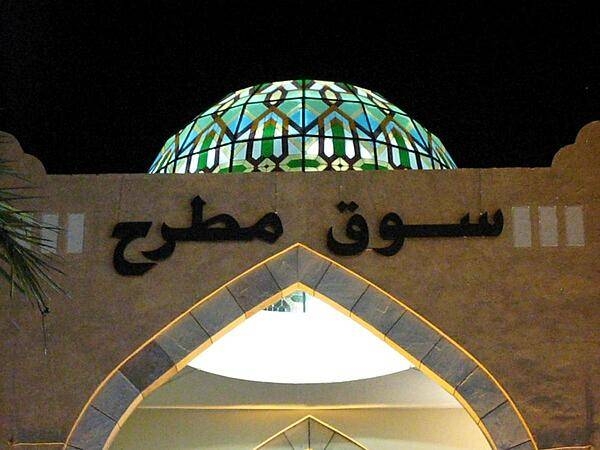Oman
Photos
6 Photos
Filter Categories
All
Filters
Much of the sediment clouding the water in this image of the Persian Gulf is from the Shatt al Arab River, which enters the Gulf in the north along the Iran-Iraq border. The river drains the combined waters of the Euphrates and Tigris Rivers of Iraq, and the Karun River of Iran. Though other rivers empty into the Persian Gulf, most of its fresh water comes from the Shatt al Arab. On the right edge of the image is the narrow Strait of Hormuz, which connects the Persian Gulf to the Arabian Sea, part of the northern Indian Ocean. The Persian Gulf is flanked to the west by wedge-shaped Kuwait and by Saudi Arabia with its vast tan-, pink-, and white-sand deserts; to the south by Qatar, the United Arab Emirates, and Oman; and to the east by the dry mountains of Iran. The wetlands and rivers of Mesopotamia border the Gulf on the north. The red dots mark gas flares in oil fields of Iran and Iraq. Image courtesy of NASA.
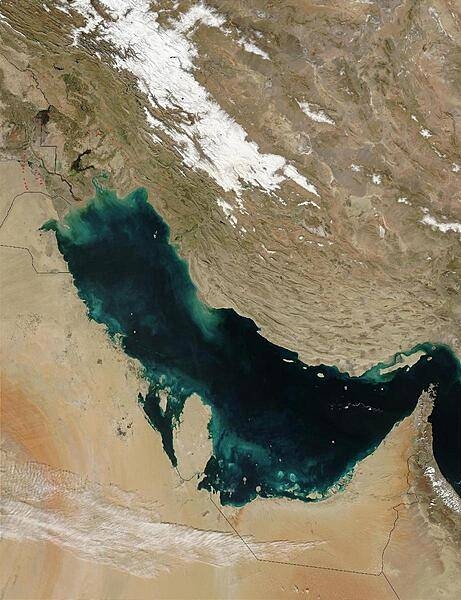
The Ar Rub al Khali (Great Sandy Desert) lies in the southern Arabian Peninsula. Also known as the "Empty Quarter," it is a large region of sand dunes and interdune flats known as a sand sea (or erg). This photo, taken from the International Space Station, highlights a part of the Ar Rub al Khali located close to its southeastern margin in the Sultanate of Oman. Reddish-brown, large, linear sand dunes alternate with blue-gray interdune salt flats known as sabkhas at left. The major trend of the linear dunes is transverse to northwesterly trade winds that originate in Iraq (known as the Shamal winds). Formation of secondary barchan (crescent-shaped) and star dunes (dune crests in several directions originating from a single point, looking somewhat like a starfish from above) on the linear dunes is supported by southwesterly winds that occur during the monsoon season (Khareef winds). The long linear dunes begin to break up into isolated large star dunes to the northeast and east (right). This is likely a result of both wind pattern interactions and changes in the sand supply to the dunes.
The Empty Quarter covers much of the south-central portion of the Arabian Peninsula, and with an area of approximately 660,000 sq km (255,000 sq mi) it is the largest continuous sand desert on Earth. The Empty Quarter's hyperarid climate and the difficulty of travel through the dunes has not encouraged permanent settlement within the region. There is geological and archeological evidence, however, to support cooler and wetter past climates in the region together with human settlement. This evidence includes exposed lakebed sediments, scattered stone tools, and the fossils of hippopotamus, water buffalo, and long-horned cattle. Image courtesy of NASA.

Much of Oman is desert, but the Arabian Sea coast in the Dhofar region represents a startling difference in climate shown in this false-color satellite image. This coastal region catches the monsoon rains, or Khareef, during the summer months. Drenching rains fall primarily on the mountainous ridge that separates the lush, fertile areas (in green) along the coast from the arid interior (in pink), recharging streams, waterfalls, and springs that provide plentiful water supplies in the fertile lowlands for the remainder of the year. Image courtesy of USGS.
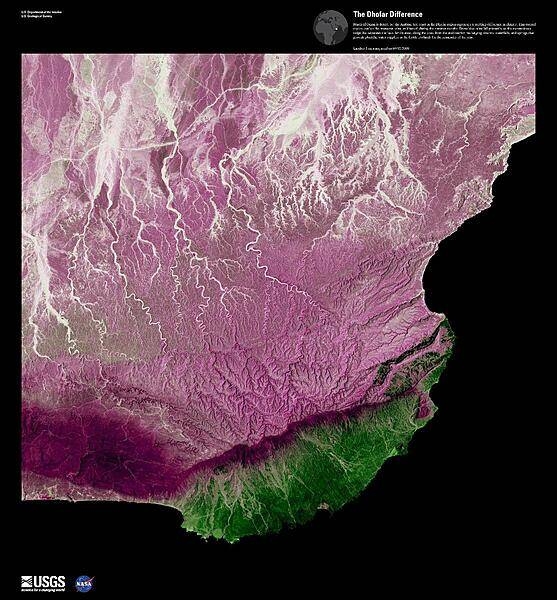
The Grand Mosque in Muscat was commissioned by Sultan Qaboos in 1992. It was inaugurated in 2001 and can accommodate up to 20,000 worshipers.
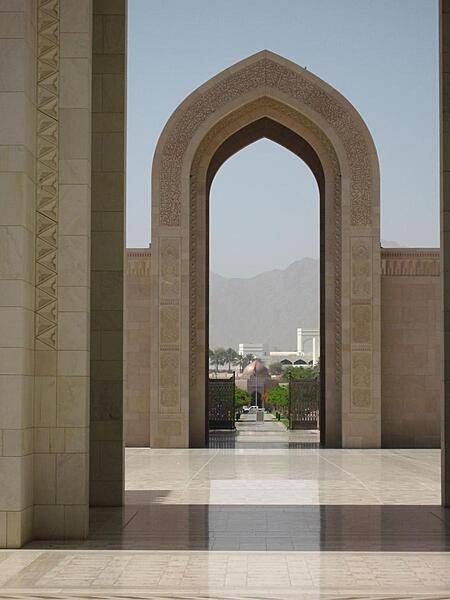
The 70 x 60 m (230 x 197 ft) prayer carpet in the main prayer hall of the Grand Mosque in Muscat is the second largest hand-woven, single-piece carpet in the world and took four years to complete. The primary chandelier, a smaller version of which is shown in this photo, is 14 m (46 ft) tall.
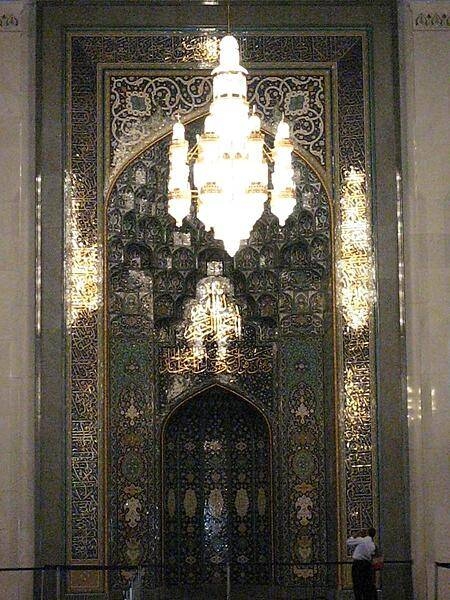
The Souq Muttrah is a traditional bazaar in the largest seaport in the region. Before the discovery of oil, Muttrah was the center of commerce in Oman.
